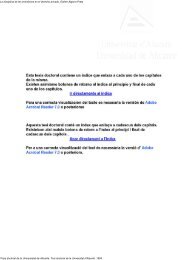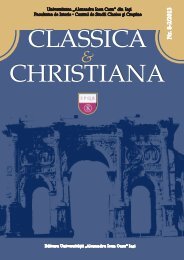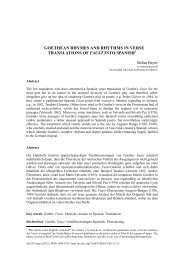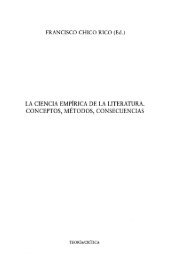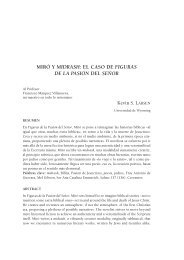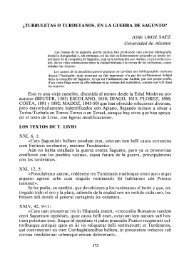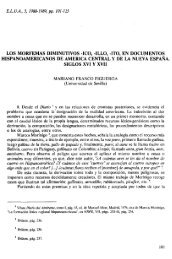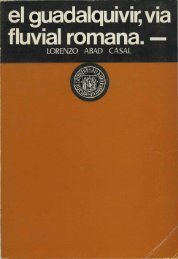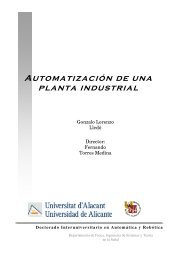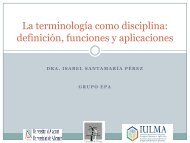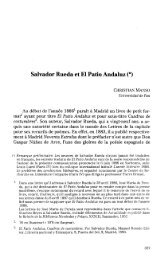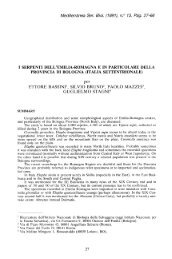ecological effects of marine protected areas empafish project ...
ecological effects of marine protected areas empafish project ...
ecological effects of marine protected areas empafish project ...
You also want an ePaper? Increase the reach of your titles
YUMPU automatically turns print PDFs into web optimized ePapers that Google loves.
EMPAFISH Booklet no. 1 Ecological <strong>effects</strong> <strong>of</strong> Atlanto-Mediterranean MPAs in the EU<br />
1987 and 1989) and four years after it was in place (spring 1994) were<br />
compared. Sampling design was based on three depth strata (10-50 m, 51-<br />
100 m, 101-200 m); twenty-one and thirty hauls were made before and after<br />
the ban, respectively. Eleven target species (nine finfish and two<br />
cephalopods) as well as the total catch were used for comparisons. The total<br />
catch underwent an 8-fold increase in biomass after the four-year ban, and all<br />
the considered species underwent an increase, ranging from 1.2-fold for<br />
musky octopus (Eledone moschata) to 497-fold for gurnard (Lepidotrigla<br />
cavillone). The only decrease was for horned octopus (Eledone cirrhosa).<br />
Further studies showed that the demersal biomass remained at very high<br />
levels in the following years, in both inshore sandy <strong>areas</strong> and <strong>of</strong>fshore muddy<br />
<strong>areas</strong> (D’Anna et al. 2001; Pipitone et al. 2001; Pipitone et al. 2004). A model<br />
<strong>of</strong> distribution was set up using cellular automata for the red mullet<br />
(Badalamenti et al. 2002b).<br />
74<br />
o Trophodynamic changes<br />
The consequences for food-web structure <strong>of</strong> protecting <strong>marine</strong> communities<br />
from trawling have been explored in the Gulf (Badalamenti et al. 2000b;<br />
Badalamenti et al. 2002d). Using stable isotopes <strong>of</strong> carbon and nitrogen, our<br />
objectives were to see if mean trophic level and omnivory had increased after<br />
the ban in three <strong>of</strong> the most common fishery-target species, namely, the<br />
anglerfish Lophius budegassa, Mediterranean hake Merluccius merluccius, and<br />
red mullet Mullus barbatus. We compared size data from before and after the<br />
fishery closure, but we also compared recently derived data from outside and<br />
inside the closed area. In all three species δ13C and δ15N were found to differ<br />
markedly depending on fish size. δ13C was found to decrease in L. budegassa<br />
and M. merluccius but increase in M. barbatus with increasing fish length.<br />
δ15N increased in all three species, and this was thought to reflect feeding at<br />
increasingly higher trophic levels during the animals’ lives. Mean length, and<br />
therefore δ15N derived trophic level, increased after the trawl ban only in the<br />
anglerfish L. budegassa. Based on δ13C and δ15N data, none <strong>of</strong> the species<br />
became more or less omnivorous after the ban. After 9 years <strong>of</strong> no trawling,<br />
increases in numerical abundance were not accompanied by substantial sizerelated<br />
trophodynamic shifts in any <strong>of</strong> the three species <strong>of</strong> fish studied.<br />
The trophodynamics <strong>of</strong> three Mediterranean fishes robust to trawling<br />
disturbance was also investigated (Badalamenti et al., in press). Trawling has<br />
a significant effect on the structure <strong>of</strong> <strong>marine</strong> communities, yet the ubiquity <strong>of</strong><br />
trawling impacts makes the testing <strong>of</strong> spatial variation in such <strong>effects</strong> difficult.<br />
This study examines trawling impacts on fish trophodynamics by comparing<br />
trophodynamics in the Gulfs <strong>of</strong> Castellammare and Termini Imerese (northern<br />
Sicily) the first <strong>of</strong> which has had a large no-trawl area since 1990. Nitrogen<br />
and carbon stable isotope data were used to assess trophic levels and source<br />
<strong>of</strong> production supporting 3 demersal fish species (Mediterranean hake, red<br />
mullet and anglerfish). The exclusion <strong>of</strong> trawling has no <strong>ecological</strong>ly significant<br />
effect on fish trophic level at size and no systematic effect on the sources <strong>of</strong><br />
production supporting any species at the size sampled, thus discounting a<br />
large bottom-up influence on fish trophodynamics. Smaller scale variations<br />
(east/central/west sectors or depth strata) in δ13C isotopic signatures



